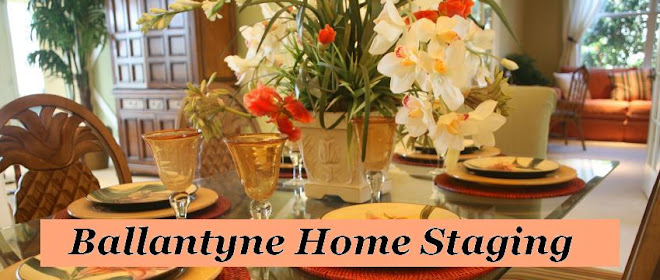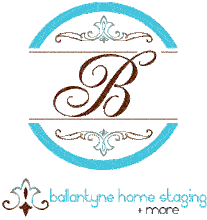
Selling a house is like a steeplechase race horse jumping over hurdles.
Some race horses make the jumps look so easy; they run and jump in rhythm under the jockey's guidance. As a home seller, your job is to make home buyer's hurdles easy to jump. Home buyers make up their minds about a house on each step they take or every barrier they cross. You need to make sure your buyer crosses each barrier. Here are eight hurdles for you to win the house race.
Hurdle #1 Listings Advertised with Benefits.
Buyers make up their mind about the online or print listing whether or not to continue reading. That means they approve of the basic features and price. Home shoppers must see something that makes your house stand out in a buyer's market. To entice a buyer to email the listing agent or pick up the phone and call about your house, the buyer must read some benefit that they need or desire. This should be your property's best benefit to the buyer, such as "Enjoy the panoramic views of Charlotte’s skyline from your large deck and entertain in style with custom barbecue" or "Move right in without fixing or painting a thing. Owners will even help with your costs."
Hurdle #2 Curb Appeal that Pulls the Buyer Inside
When shoppers pull up in front of your house, the first glimpse must impress them enough to get out of their vehicle to see what's inside. For condo sellers, the development has to pass approval and your unit should stand out with added appeal like large potted plants near the door in colorful containers. The typical house needs pizzazz near the front door to draw the eye into the house. You must entice the buyer to cross the threshold to see what's inside. The front porch and door should be clutter free and clean, with a good mix of color.
Hurdle #3 First Impressions Entice Buyers
Inside, the typical home buyer makes up their mind within 15 seconds whether or not they're interested in your house. This is why the first sighting inside must pass inspection and peak interest, a critical role of
Home Staging.
Hurdle #4 Lasting Impressions Sell Houses

To encourage shoppers to spend more than the usual four minutes previewing a house, enlist the help of an
Accredited Staging Professional® and employ their strategies. Buyers select a home based on their emotions. They choose the home they connect with and one they think "feels like home." This just doesn't happen in four minutes. Houses that make buyers envision living in the home, enjoying a better lifestyle, and entertaining friends help buyers make up their minds.
Hurdle #5 Yard Signs that Attract the Eye without Destroying View of Home
The yard sign should look professional and not take away from the appeal. Many over-sized yard signs clutter the landscape. Put the sign to the side a bit and consider a shorter sign for smaller houses. Instead of wasting words with the all the amenities, make the phone number legible from the street and list the best feature not obvious from the curb. QR codes, while popular with Realtors®, haven’t caught on with mainstream buyers yet.
Hurdle #6 Non-Generic Sales Flyer
Perhaps a house shopper will be interested enough to get out of their vehicle and pick up a sales flyer. This means that the flyer needs to be written with sales copy that gives motivation to see the property. A black & white (i.e., boring) generic flyer with a long list of features should be rewritten using Marketing Psychology with strong benefits to the buyer.
Hurdle #7 Make the Purchase Easy
Buyers make offers on houses when they feel comfortable with the paperwork. If you're selling by owner, have a basic contract on hand that doesn't confuse buyers and have a closing agent or escrow officer draw up the formal documents later. If you're selling by agent, your agent must be trained on how to handle negotiations beyond just filling out forms.
Hurdle #8 Keep Sale on Track for the Finish Line
During the sale process, monitor all the closing details. Keep your home staged for the most important date: appraisal day. Invite you buyers to return early in the sale for their walk through so they stay "in love" with your home. Make sure all the appointments are made and kept, such as inspections, and contracts signed on time.
Turn house shoppers into motivated buyers, help your buyers jump the hurdles, and you'll win the house race.
www.ballantynehomestaging.com | 980.322.5825 | carol@ballantynehomestaging.com
 To make a small room seem larger, we recommend staying with one color when doing home staging. However, to make a small room look larger and cozy, you can apply the old 80/20 business rule by painting 80% of the room’s walls one color and 20% another. You can also try 60%/40%, but when you want just an accent color or pattern in a small space, the 80/20 method works really well – especially if the 80% color is neutral and the 20% color is strong. And if you are quite conservative and unsure about an 80/20 paint scheme, you can apply the rule in the overall color scheme of the room by bringing in accessories to give you the 20% accent color.
To make a small room seem larger, we recommend staying with one color when doing home staging. However, to make a small room look larger and cozy, you can apply the old 80/20 business rule by painting 80% of the room’s walls one color and 20% another. You can also try 60%/40%, but when you want just an accent color or pattern in a small space, the 80/20 method works really well – especially if the 80% color is neutral and the 20% color is strong. And if you are quite conservative and unsure about an 80/20 paint scheme, you can apply the rule in the overall color scheme of the room by bringing in accessories to give you the 20% accent color.




















